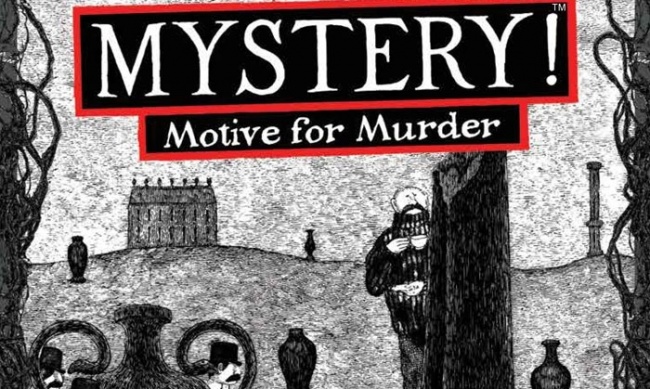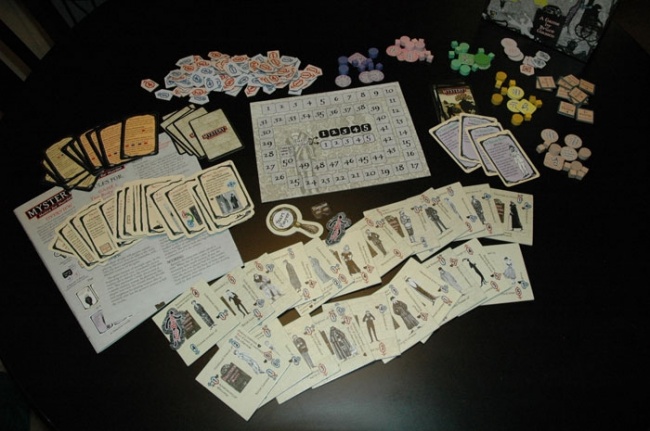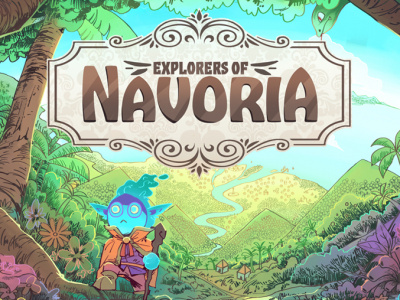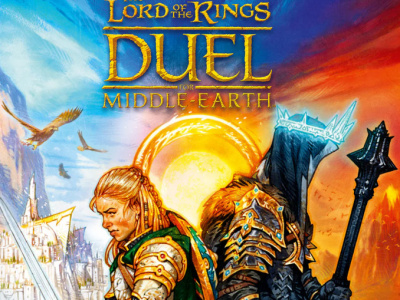Publisher: Mayfair Games
Designer: Bruce Glassco
Release Date (US): October 2015
MSRP: $35.00
Players: 1 - 5
Ages: 10 and up
Playing Time: 30 to 90 minutes
Product #: MFG4130
ICv2 Rating: 4 Stars out of 5
For as long as I can remember, I have been a fan of the PBS series Mystery! I still get a little thrill to watch the delightfully morbid animation of Edward Gorey, with its grey-scale view of Victorian murder. I remember the delight of watching Vincent Price or Diana Rigg introduce the night’s tale. It is part of the reason why I still enjoy a well-crafted whodunit, whether it be book, film… or game. Small wonder than that I was intrigued when I learned that Mayfair was producing a game inspired by my own inspiration. Like the tales of Mystery!, though, what I found inside was not what I expected…
Summary: A dead body has been found on the grounds of a stately English manor. As a highly-competitive detective, your goal is, well, not to discover who did it actually, but rather to construct a network of relationships between 22 suspects in such a way that the suspect you interrogated has the strongest motive for the murder. Along the way, unforeseen events can occur, be they a second murder (gasp!), a hidden motive revealed, or exculpatory evidence uncovered.The game uses a tile-placement mechanic to represent the relationships between the suspects. Each tile shows one potential murderer with four possible relationships, some loving, some hateful. By playing the tiles, players create a web of motivations for murder, either because the suspect hated the victim directly, or because they loved someone who did hate the victim (or, alternatively, hated someone who loved the victim…). Odd happenings like a “Secret Marriage,” “Brilliant Deduction,” or the ever-popular “Hobnob With Aristocracy” are controlled through the play of cards and can drastically change the landscape of motives, adding another layer of strategy to the game.
Originality: Read a classic murder mystery, and more often than not it is the motivations of the characters that is the focus of the tale, and it is the exploration of these very human relationships that makes the tale interesting. By removing everything else, designer Bruce Glassco has distilled his game down to this very essence. Nobody really cares what the murder weapon was or where the crime took place. They want to dig into the dirt of suspicious people’s lives, and that is what is explored in Mystery!: Motive for Murder. Mechanically, the interplay of tile placement and “gotcha” card play creates a tension in the game well-suited for the game’s theme.
Presentation: Okay, I’ll grant that I’m a sucker for Edward Gorey, and his artwork is lavishly spread across almost every game component. I say kudos for this, but as with all forms of artwork, your mileage may vary, so take that as you will. Graphically, the cards, tiles, and symbols are easy enough to use, once you become accustomed to them, which won’t take more than a couple turns. Cards are easy to read, as are the rules, though these could have benefited from a few more examples. The box imagery does make it clear that this is a game inspired by Masterpiece Mystery!, which is great, but it does have a downside of being a bit drab and melancholy, with only a splash of color. Perfectly appropriate, certainly, but sadly not attention-grabbing.
I did particularly appreciate the “programmed learning” approach of the rulebook, something that I have always preferred for games with any level of complexity. In this approach, rules are presented a few at a time, with new concepts inserted at the beginning of each game. This is great for getting players into the game quickly, while still not limiting the complexity of the “full” game. When it works well, I think, it is the best way to construct a rulebook. And in my opinion, it works well here.
Quality: As far as the component quality is concerned, there is nothing to complain about here. The tiles and tokens are all nice, thick, and sturdy. The cards are top quality. The wooden cubes and tokens are good. The box is sturdy and well constructed. Though I would point out that the box is quite a bit larger than it needed to be, leaving a fair amount of air inside.
Marketability: Gamers that are looking for a good “solve the murder” game are going to be disappointed with Mystery!: Motive for Murder, as that is not what this game represents. However, fans of tile placement games that have a good level of player interaction will find a lot to like inside this box. The price you pay for what you get in the box is a tad high, I think, but the playing quality of the game does make up for that quite a bit.
Overall: Once I got over my initial disappointment that this was not actually a game about solving the murder, and approached Mystery!: Motive for Murder as what it really is - a clever and solid strategy game - I found a lot to like in the game. The decision of when to play tiles and when to play cards is intriguing, and the unpredictability that cards can create on the tableau keeps things interesting to the very end. While at first, gameplay is simple enough that it could be family fare, as you reach the highest levels of complexity the game can become quite the brain-burner. Fortunately, it is enjoyable to play at both levels.
While Mystery! Motive for Murder wasn’t what I was hoping for when I opened the box, like a good mystery itself, I found something unexpected once I dug under the surface: A clever and satisfying multi-layered strategy game. I give this game 4 out of 5.










